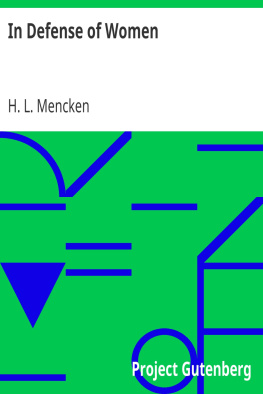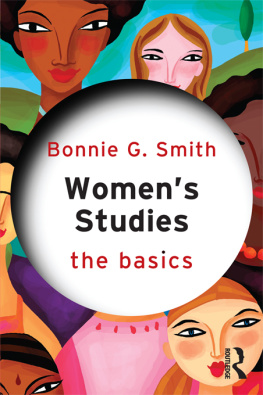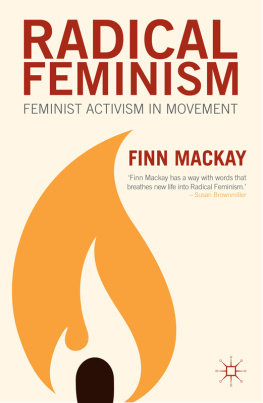Thank you for buying this ebook, published by NYU Press.
Sign up for our e-newsletters to receive information about forthcoming books, special discounts, and more!
Sign Up!
About NYU Press
A publisher of original scholarship since its founding in 1916, New York University Press Produces more than 100 new books each year, with a backlist of 3,000 titles in print. Working across the humanities and social sciences, NYU Press has award-winning lists in sociology, law, cultural and American studies, religion, American history, anthropology, politics, criminology, media and communication, literary studies, and psychology.
Real Knockouts
Real Knockouts
The Physical Feminism of Womens Self-Defense
Martha McCaughey
NEW YORK UNIVERSITY PRESS
New York and London
1997 by New York University
All rights reserved
Library of Congress Cataloging-in-Publication Data
McCaughey, Martha, 1966
Real knockouts : the physical feminism of womens self-defense /
Martha McCaughey.
p. cm.
Includes bibliographical references (p. ) and index.
ISBN 0-8147-5 512-7 (cloth : acid-free paper)
ISBN 0-8147-5577-1 (pbk. : acid-free paper)
1. Self-defense for womenSocial aspects. 2. Feminist theory.
3. WomenCrimes againstPrevention. I. Title.
GV1111.5.M38 1997
613.66082dc21 97-4774
CIP
New York University Press books are printed on acid-free paper,
and their binding materials are chosen for strength and durability.
Manufactured in the United States of America
10 9 8 7 6 5 4 3 2
Acknowledgments
This project owes much to all the women with whom I shared the exhilarating experience of learning self-defense, and to those who took time to speak with me about their understandings of self-defense. I am equally indebted to the instructors who shared their time and perspectives in interviews with me. Many of them shared materials with me, helped me make contacts with other people involved with womens self-defense training, and even read a draft of this book. I am also grateful to the many people, from a variety of self-defense-related organizations, who sent me photographs, articles, and other valuable information.
My gratitude goes to Robin Lloyd for suggesting that I take a self-defense class. Some years before that, Walter Allen encouraged intellectual aggressiv-ity in me and his other students, and Luis Sfeir-Younis taught the importance of nonviolence and love. Without these people this book would not have been written. My thanks go to the friends, family members, and colleagues, too numerous to name, who clipped articles from newspapers, told me about a television show or book related to womens self-defense, or shared some information with me. Thanks to Kelly Nugent and Trina Seitz for obtaining data and other materials for me. Christine and John Watkins generously housed me while I conducted research on the East Coast, and the University of California at Santa Barbara funded some aspects of my research.
The following people made helpful intellectual contributions at various stages of my research and writing: Lisa Brush, Laura Grindstaff, Elisabeth Jordan, Ann Kilkelly, John Mohr, Frances Montell, Niko Pfund, and Beth Schneider. Niko Pfund and his staff at New York University Press have been encouraging, diligent, and witty through each phase of the publishing process. I am most grateful to Avery Gordon, Neal King, and Richard Widick, who made extraordinary contributions from the formative to the final stages of the book.
Thanks also go to the many female students I had at UCSB who made unsolicited revelations, in confidence, of their experiences of sexual violence. Their stories remind me of the frequency and pain of sexual violence and of the need for change. Ive been encouraged by the many students to whom I lectured who got excited about mean women and made a point of telling me so.
Finally, this work owes a debt to all the feminist activists before me who challenged the notions that women shouldnt speak in public, pursue higher education, play sports, and wear blue jeanssome of my favorite unladylike activities. It also owes much to those contemporary feminists who have challenged rape laws, self-defense laws, and standards of heterosexual normativ-ity, making possible this modest attempt to push those ideas further.
Preface
This book offers a way to understand and experience womens self-defense. As a participant-observer studying and describing womens self-defense training, I have connected an array of happenings, courses, sentiments, and statements into a coherent movement. Real Knockouts, then, like all ethnography, is as much a means of experience as it is a record of it. Armed with the insights of feminist scholarship, this analysis of self-defense highlights its potential for undermining violence against women and sex inequality more broadly.
Of course self-defense cannot be the only way of resisting male domination, or even male violence specifically. Nevertheless, self-defense has important implications beyond the trained woman who thwarts an assault and the person who tries to attack her. Womens increasing involvement in self-defense disrupts the gender ideology that makes mens violence against women seem inevitable. Beyond this, it prompts us to question some of the assumptions that have been driving feminist theory and politics.
Rather than attempting a sweeping survey of self-defense organizations and their participants, Real Knockouts offers a deep description of womens self-defense. It analyzes how self-defense training transforms the female body and then assesses the impact that self-defense could have on our culture, including the educational efforts, political organizing, and theorizing of feminists who first called our attention to sexual violence as a social problem. My hope is that clarifying the political and philosophical stakes of womens self-defense might expand the possibilities for womens legitimate use of aggression against mens, as well as for our negotiation of categories with which we understand and organize ourselves politically.
This book does not attempt to answer the question, What do I do if someone tries to rape me? (an issue addressed in Pauline B. Bart and Patricia H. OBriens Stopping Rape: Successful Survival Strategies, 1985, and in countless self-defense manuals). Nor does it hope to provide an institutional history of womens self-defense or a survey of the many womens selfdefense Finally, my book does not recount womens self-defense victories (see Caignon and Grovess Her Wits about Her: Self-Defense Success Stories, 1987).
Anytime one attempts to write a grounded, serious book about a widespread political and cultural phenomenon in an engaged scholarly fashion, one faces the inevitable dilemma of deciding for whom one is writing. In this particular case, I am writing for two groups of people who know surprisingly little about each other, making this dilemma all the more exaggerated. On the one hand, self-defense activists, participants, instructors, and students tend not to be immersed in feminist theory, in which this book is, after all, rooted. On the other hand, feminist scholars and other academics are, in my experience, unlikely to have more than a fleeting, impressionistic knowledge of those engaged in self-defense. Phrased differently, how many women at the Modern Language Association or the annual sociology convention know how to shoot a gun or how to kick someone in the jaw? And how many women in self-defense courses have read up on their Judith Butler, their Catharine MacKinnon, or their Michel Foucault? I hope I will not be perceived as disparaging when I say that the number of folks who travel in both circles is statistically rather marginal. So, what to do? In this book, I endeavor to speak to both groups and, in doing so, must ask for your understanding if at times you weary of hard theory and yearn for an anecdote or a personal narrative, or, if you would like to see specific theoretical points explained more intricately or succinctly. This book, then, is written for both ordinary educated readers interested in womens empowerment and resistance to violence, and scholars interested in debates about subjectivity, agency, and embodiment. If successful, it will show how the latter matters bear upon the former.







